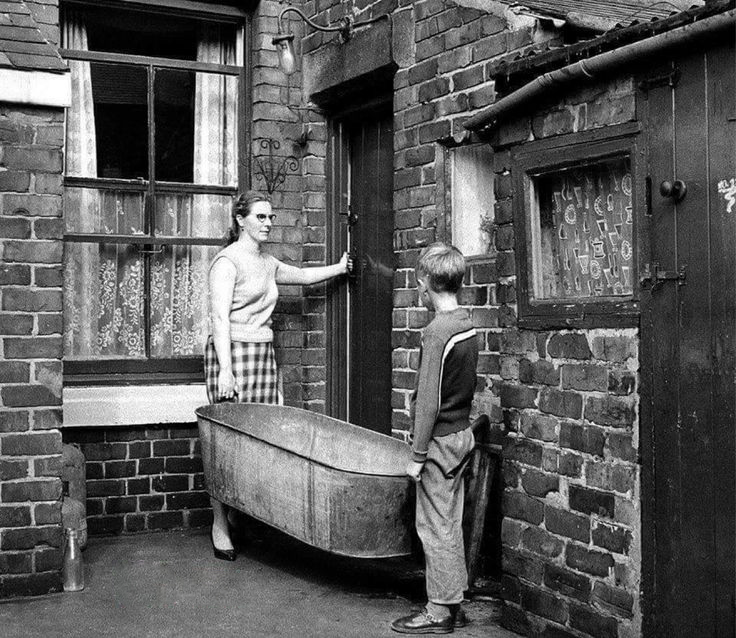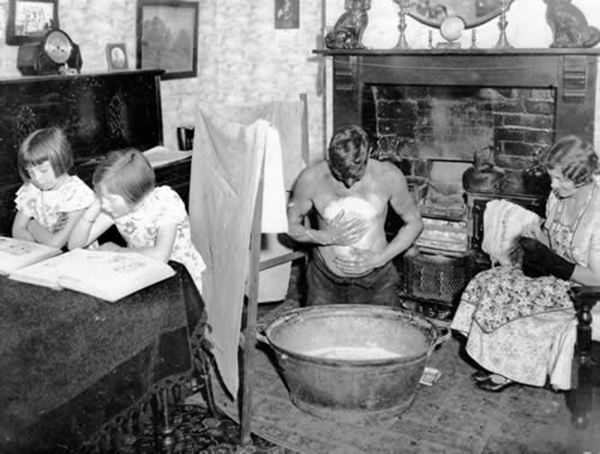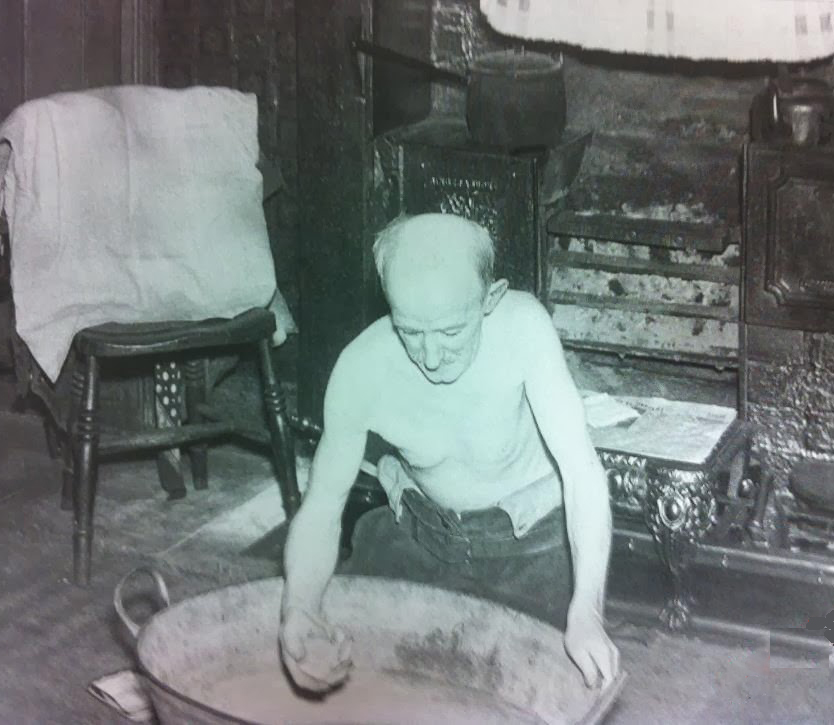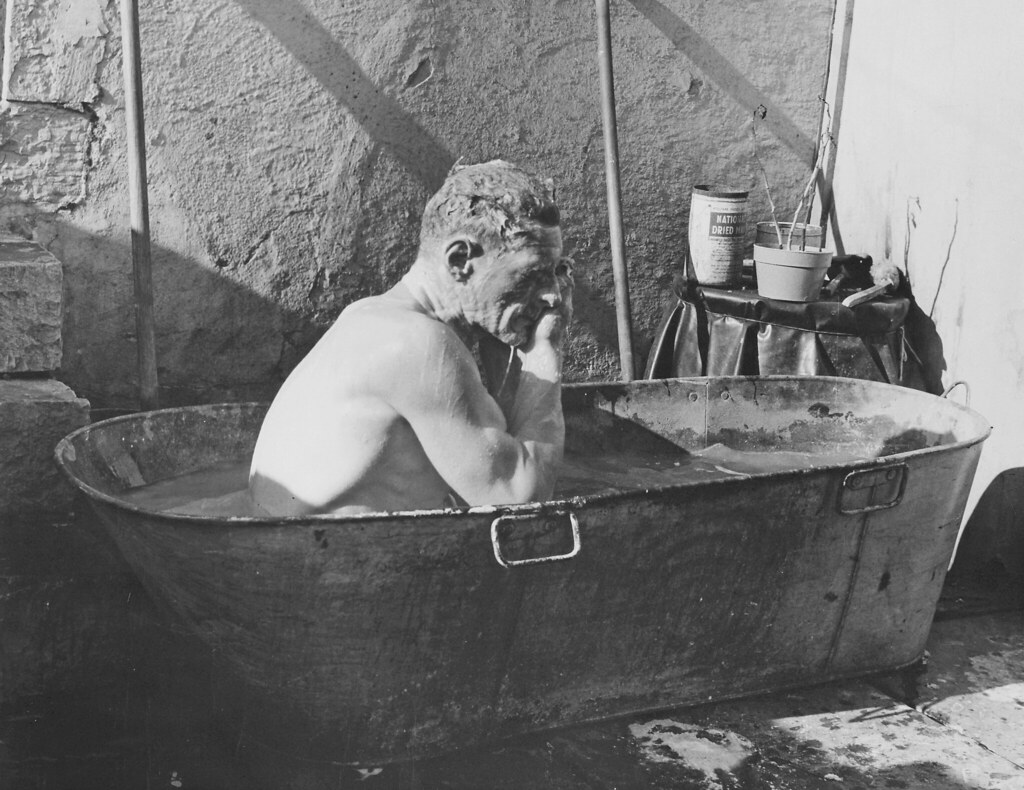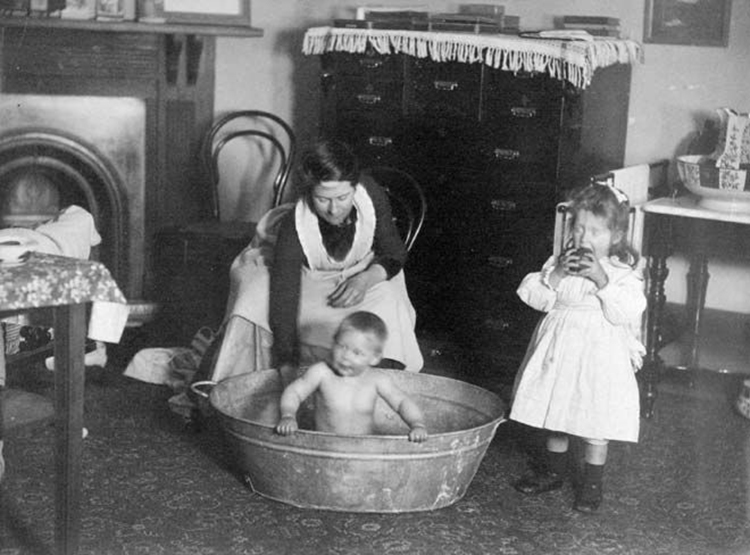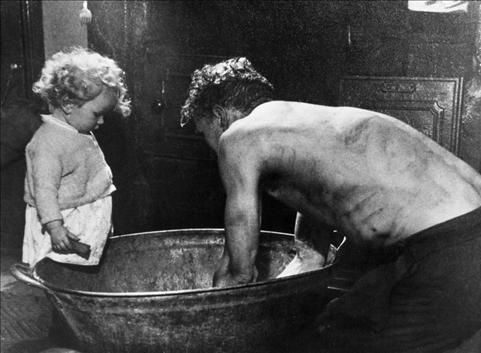Lowerhouse Mile - 'Bath Time'
Many in the 18th century believed bathing to be harmful so even in rich households it was done in moderation. The theory back then was that germs, then known as
miasmas, were everywhere, and they could enter the body through the skin. Therefore bathing the skin, especially in hot water, would leave the pores open so that
these germs could seep in and bring about poor health and illness.
During the early part of the 1800's when the Industrial Revolution began, the air in towns and cities was filled with soot and smog, and the housing created and built
by mill owners for their employees was often over crowded, which meant that hygiene practices were often limited to a weekly wash in a tin bath placed in front of the
living room fire/range.


